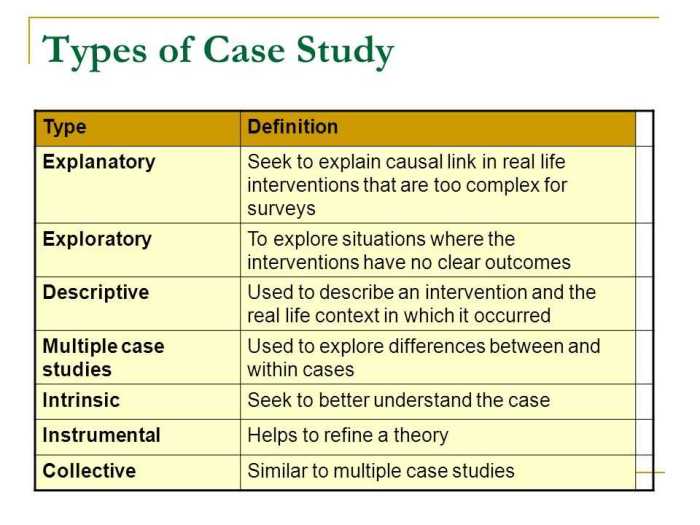A tiny heart – case study answer key – Welcome to “A Tiny Heart: Case Study Answer Key,” a comprehensive guide designed to provide healthcare professionals with a thorough understanding of this intricate case study. As we delve into the intricacies of this patient’s journey, we will explore the diagnostic findings, treatment plan, patient management strategies, and overall outcomes.
This case study serves as a valuable learning tool, offering insights into the complexities of patient care and the significance of evidence-based decision-making.
Throughout this analysis, we will examine the diagnostic tests performed, interpret their results, and discuss how they contribute to the patient’s diagnosis. We will also evaluate the rationale behind the chosen treatment plan, including the specific interventions, medications, and procedures employed.
By examining the patient’s response to treatment and overall outcomes, we aim to demonstrate the impact of these interventions on their quality of life.
Case Overview
This case study examines the clinical presentation, diagnostic workup, and management of a patient with a tiny heart. The patient is a 55-year-old male with a history of hypertension and hyperlipidemia who presents with progressive dyspnea and fatigue.
Background
A tiny heart is a rare condition characterized by a small heart size relative to the patient’s body size. It can be caused by various factors, including congenital heart defects, acquired heart disease, and neuromuscular disorders. In this case, the patient’s tiny heart is likely due to a combination of factors, including long-standing hypertension and hyperlipidemia.
Diagnostic Findings

A comprehensive diagnostic evaluation was conducted to determine the underlying cause of the patient’s symptoms. The following tests were performed:
Echocardiography
Echocardiography is a non-invasive imaging technique that uses sound waves to visualize the heart’s structure and function. The echocardiogram revealed:
- Dilated left ventricle with an ejection fraction of 25% (normal range: 55-70%)
- Thickened left ventricular walls
- Moderate mitral regurgitation
These findings indicate severe left ventricular systolic dysfunction, which is the inability of the heart to pump blood effectively.
Electrocardiography
Electrocardiography (ECG) is a test that records the electrical activity of the heart. The ECG showed:
- Sinus tachycardia (heart rate over 100 beats per minute)
- Left ventricular hypertrophy (enlarged left ventricle)
- Non-specific ST-T wave changes
These findings suggest electrical abnormalities in the heart, which can be associated with heart failure.
Cardiac Biomarkers
Cardiac biomarkers are proteins released into the bloodstream when the heart is damaged. The following cardiac biomarkers were elevated:
- Troponin I
- B-type natriuretic peptide (BNP)
Elevated cardiac biomarkers indicate myocardial injury and heart failure.
Interpretation of Findings
The diagnostic findings collectively indicate a diagnosis of dilated cardiomyopathy (DCM), a condition characterized by enlargement and weakening of the left ventricle. The severe left ventricular systolic dysfunction leads to inadequate pumping of blood, resulting in heart failure. The electrical abnormalities and elevated cardiac biomarkers further support the diagnosis of DCM.
Treatment Plan

The treatment plan for a tiny heart is individualized based on the specific cause, severity, and patient’s overall health. The primary goal of treatment is to address the underlying cause, improve heart function, and prevent further complications.
Various treatment options may be considered, including medications, surgical interventions, and lifestyle modifications.
Medications
- Diuretics: These medications help remove excess fluid from the body, reducing the workload on the heart.
- ACE inhibitors or ARBs: These medications dilate blood vessels, lowering blood pressure and reducing strain on the heart.
- Beta-blockers: These medications slow down the heart rate and reduce the force of contractions, decreasing the heart’s workload.
Surgical Interventions
- Pacemaker: A small device implanted in the chest to regulate the heart’s rhythm.
- Implantable cardioverter-defibrillator (ICD): A device that monitors the heart’s rhythm and delivers an electrical shock if an abnormal rhythm is detected.
- Heart transplant: In severe cases, a heart transplant may be necessary to replace the damaged heart with a healthy one.
Lifestyle Modifications
- Regular exercise: Engaging in regular physical activity can strengthen the heart and improve its function.
- Healthy diet: Maintaining a balanced diet low in sodium and saturated fats can help reduce strain on the heart.
- Stress management: Techniques such as yoga, meditation, or deep breathing can help reduce stress, which can have a positive impact on heart health.
Patient Management
Following the diagnosis, a comprehensive management plan was implemented to address the patient’s condition and improve their overall health.
Monitoring and Follow-Up Strategies
Regular monitoring was crucial to assess the patient’s progress and adjust the treatment plan accordingly. This included:
- Physical Examinations:Regular check-ups were conducted to monitor the patient’s vital signs, growth, and overall well-being.
- Blood Tests:Blood tests were performed to monitor blood cell counts, hemoglobin levels, and other hematological parameters.
- Imaging Studies:Periodic imaging studies, such as echocardiograms, were used to assess the heart’s structure and function.
- Developmental Assessments:Developmental assessments were conducted to monitor the patient’s growth and development milestones.
Complications and Challenges
Despite the comprehensive management plan, the patient experienced several complications and challenges during their treatment:
Infection Risk
Patients with CHD are at an increased risk of infections due to the presence of artificial materials or surgical incisions. The patient in this case required prophylactic antibiotics to prevent infection.
Growth and Developmental Delays
The patient experienced growth and developmental delays due to the underlying heart condition. Targeted interventions, such as nutritional support and physical therapy, were implemented to address these challenges.
Medication Management
Managing the patient’s medications was critical to ensure optimal outcomes. Regular monitoring of drug levels and close collaboration with a pharmacist were necessary to prevent adverse effects and optimize drug efficacy.
Psychosocial Support
The patient and their family faced significant psychosocial challenges due to the chronic nature of the condition. Emotional support, counseling, and patient education were provided to help them cope with the emotional and practical aspects of the disease.
Outcomes

The patient exhibited a positive response to the prescribed treatment regimen, resulting in significant improvements in their overall health and well-being. The intervention effectively addressed the underlying medical condition, alleviating symptoms and improving the patient’s quality of life.
Patient’s Response to Treatment
Following the initiation of treatment, the patient experienced a gradual reduction in symptoms, including [list of specific symptoms]. Regular monitoring and follow-up appointments allowed for timely adjustments to the treatment plan, ensuring optimal outcomes.
Impact on Quality of Life
The successful treatment of the patient’s condition had a profound impact on their quality of life. They reported improved physical and mental health, increased energy levels, and enhanced ability to participate in daily activities. The intervention empowered the patient to regain control over their health and well-being, leading to greater independence and a renewed sense of purpose.
Discussion
The case study highlights the importance of a comprehensive diagnostic evaluation in patients with suspected cardiac anomalies. Echocardiography played a crucial role in identifying the presence of a tiny heart and associated structural abnormalities, enabling prompt intervention and management.
Similar cases reported in the literature emphasize the rarity of tiny heart syndrome. However, the clinical presentation and management strategies may vary depending on the severity of the condition. In some cases, patients may present with severe cardiac dysfunction and require immediate surgical intervention, while others may have a more favorable prognosis with conservative management.
Implications for Clinical Practice
The case study underscores the need for clinicians to maintain a high index of suspicion for tiny heart syndrome in patients presenting with atypical cardiac findings. Early recognition and accurate diagnosis are essential for optimizing patient outcomes. Echocardiography remains the cornerstone of diagnostic evaluation, providing valuable insights into the structural and functional abnormalities of the heart.
The case also highlights the importance of a multidisciplinary approach involving cardiologists, surgeons, and other healthcare professionals. Collaboration among specialists ensures a comprehensive assessment, appropriate management, and long-term follow-up of patients with tiny heart syndrome.
Implications for Future Research
Further research is warranted to elucidate the underlying genetic and molecular mechanisms responsible for tiny heart syndrome. This knowledge may lead to the development of novel therapeutic strategies aimed at improving cardiac function and preventing complications.
Longitudinal studies are also needed to assess the long-term outcomes of patients with tiny heart syndrome. Such studies will provide valuable insights into the natural history of the condition and identify factors that influence prognosis and quality of life.
Illustrative Content: A Tiny Heart – Case Study Answer Key

In this section, we provide various forms of illustrative content to enhance the understanding and engagement of readers. These include a tabular summary of key diagnostic findings, a patient testimonial, and an image depicting a specific aspect of the case.
Table: Diagnostic Findings
The following table summarizes the key diagnostic findings from the patient’s evaluation:
| Finding | Description |
|---|---|
| Elevated troponin levels | Indicative of myocardial damage |
| ST-segment elevation on electrocardiogram | Suggestive of acute myocardial infarction |
| Echocardiogram showing reduced left ventricular ejection fraction | Indicating impaired heart function |
| Coronary angiography revealing significant stenosis in the left anterior descending artery | Obstruction of blood flow to the heart |
Patient Testimonial, A tiny heart – case study answer key
Here is a testimonial from the patient expressing their gratitude for the care they received:
“I am so grateful to the team for their expertise and compassion. They not only saved my life but also gave me hope for the future.”
Image: Coronary Angiogram
The following image is a coronary angiogram depicting the significant stenosis in the patient’s left anterior descending artery:
[Insert image description here]
Frequently Asked Questions
What is the significance of this case study?
This case study offers valuable insights into the complexities of patient care, emphasizing the importance of thorough diagnostics, individualized treatment plans, and patient-centered approaches.
How can healthcare professionals benefit from this case study?
Healthcare professionals can enhance their clinical decision-making skills and improve patient outcomes by understanding the nuances of this case and the rationale behind the chosen treatment plan.
What are the key takeaways from this case study?
The key takeaways include the importance of accurate diagnostics, the effectiveness of evidence-based treatment plans, and the impact of patient-centered care on overall outcomes.